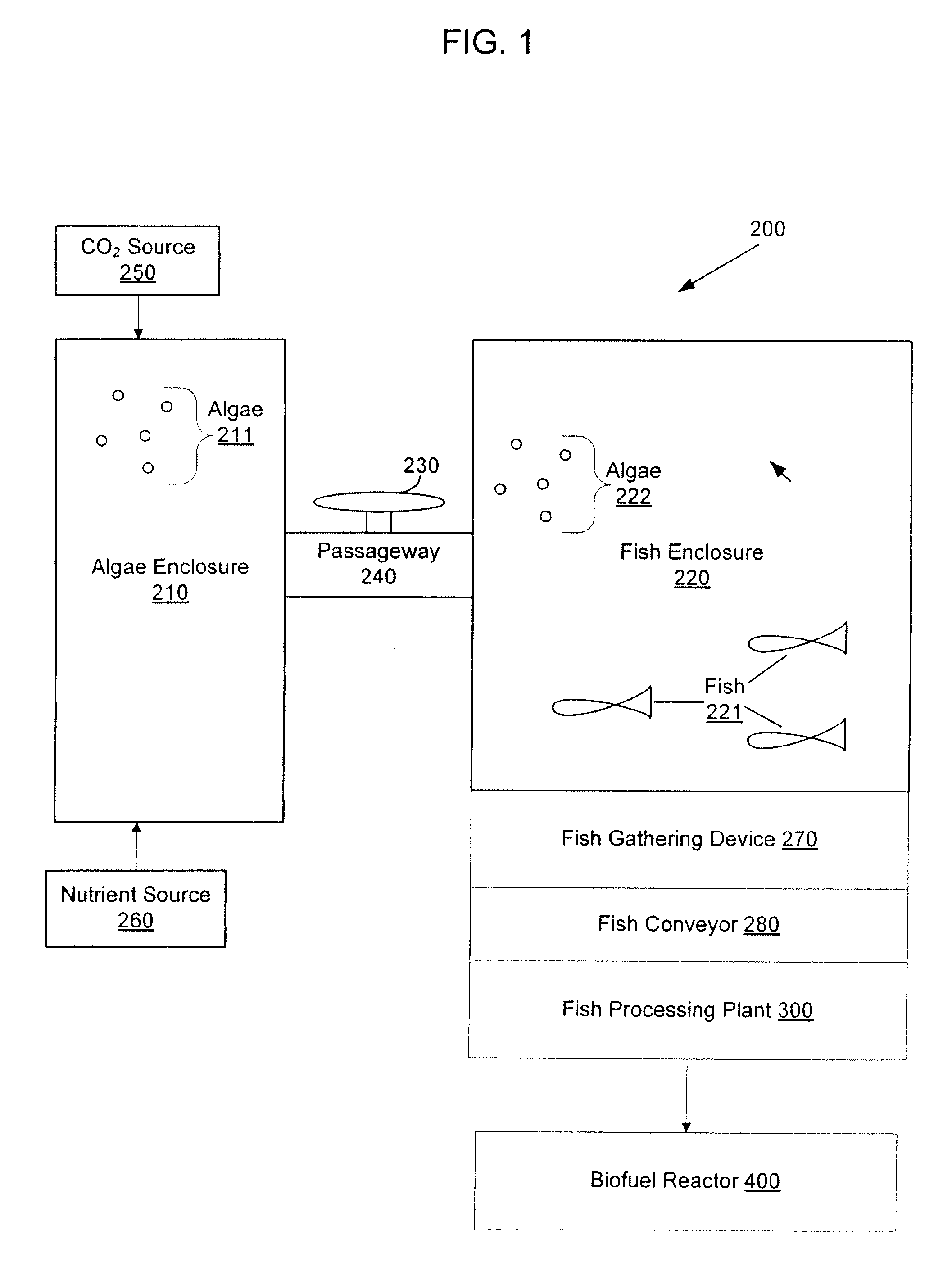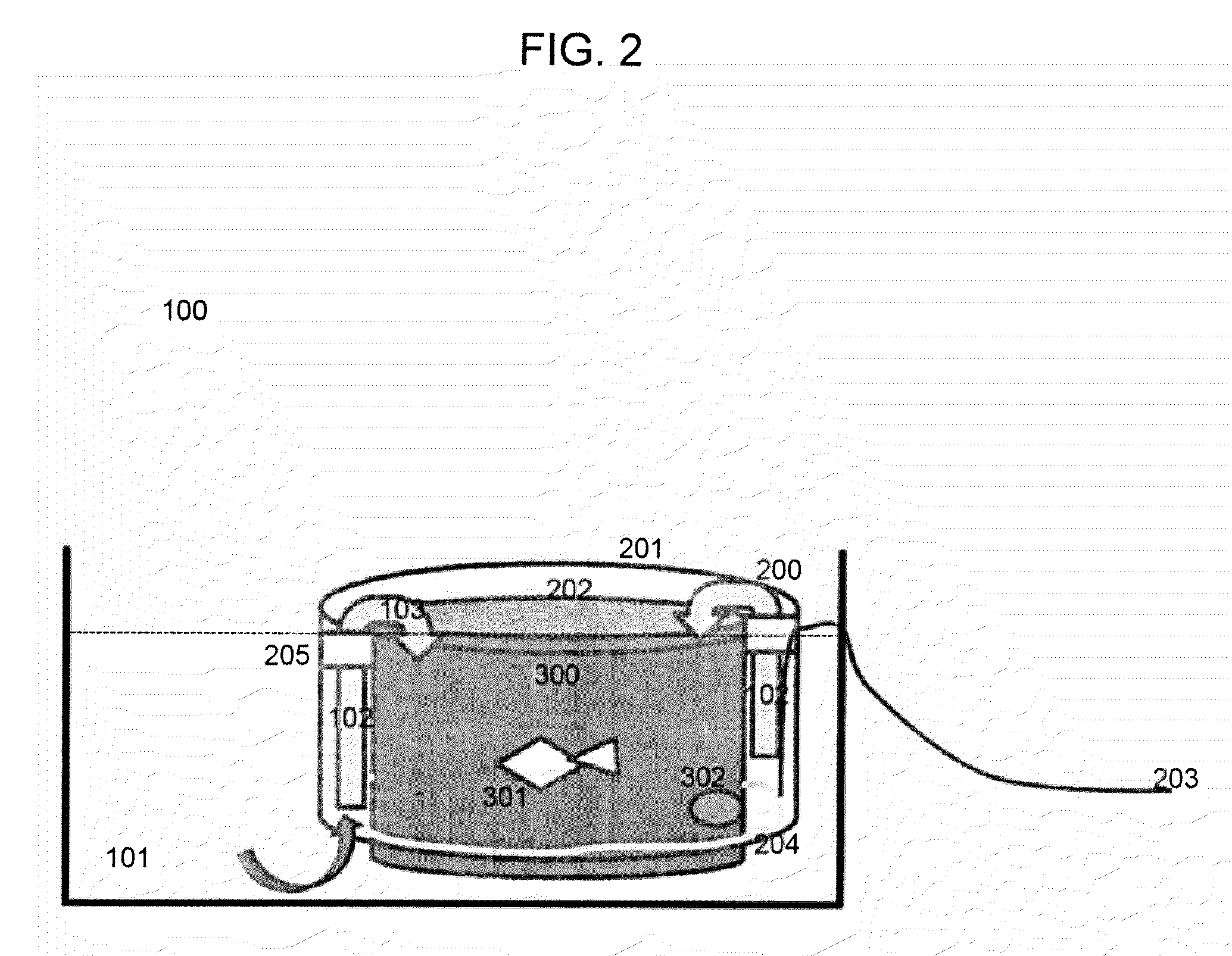Systems and methods for producing biofuels from algae
a biofuel and algae technology, applied in the direction of liquid chemical processes, gas-gas reaction processes, liquid-gas reactions of thin-film type, etc., can solve the problem of limiting the growth of the biodiesel industry to less than 1% of the diesel demand, and achieve the effect of avoiding the conventional dewatering and drying steps, cost-effective, and energy-saving
- Summary
- Abstract
- Description
- Claims
- Application Information
AI Technical Summary
Problems solved by technology
Method used
Image
Examples
Embodiment Construction
[0014]The present invention addresses the important issues of cost and efficiency in energy terms when algae is used to produce biofuel. Algae grow under light, utilizing the light energy to produce biomass by photosynthesis. The biomass comprising lipids, proteins and carbohydrates, among other valuable products, is a source of biofuel.
[0015]Many of the existing technology for making biofuel from algae are too expensive, inefficient and unsustainable when operated at a scale that is required to displace any meaningful fraction of petrodiesel in the market. The supply and expenditure of energy to harvest and process algae are often underestimated. To produce biodiesel from algae conventionally, the algae are typically harvested from a culture at a concentration of about 0.2 g / L in water. The harvested algae are then dewatered which increases the algal concentration to form an algal paste of about 15% solids. The paste is then fully dried by evaporating the water. Oil is then extract...
PUM
 Login to View More
Login to View More Abstract
Description
Claims
Application Information
 Login to View More
Login to View More - R&D
- Intellectual Property
- Life Sciences
- Materials
- Tech Scout
- Unparalleled Data Quality
- Higher Quality Content
- 60% Fewer Hallucinations
Browse by: Latest US Patents, China's latest patents, Technical Efficacy Thesaurus, Application Domain, Technology Topic, Popular Technical Reports.
© 2025 PatSnap. All rights reserved.Legal|Privacy policy|Modern Slavery Act Transparency Statement|Sitemap|About US| Contact US: help@patsnap.com



